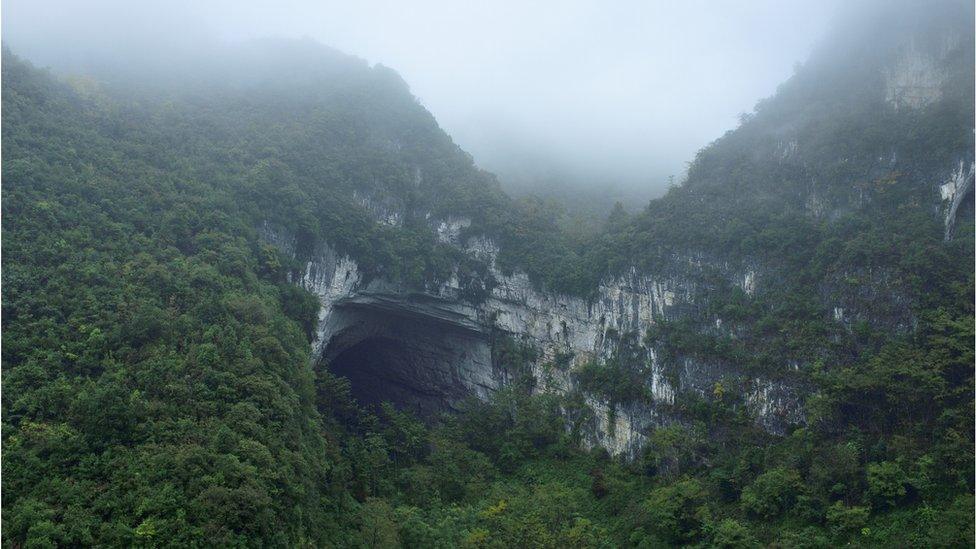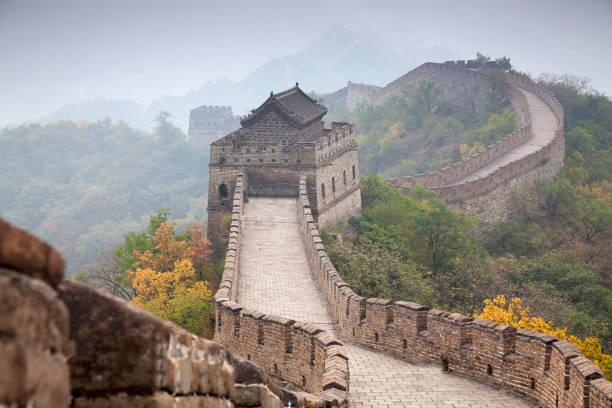Exploring China’s Ancient Forts: Hidden History Off the Tourist Trail

Imagine wandering through mist-shrouded mountains or stumbling upon crumbling stone walls deep in rural China, where echoes of ancient battles linger in the air. While the Great Wall steals the spotlight, China ancient forts offer a treasure trove of offbeat China history that’s perfect for adventurous travelers seeking authentic experiences. These historical forts in China aren’t just stone relics; they’re windows into the ingenuity of ancient China defenses that shaped empires and protected communities for millennia. Here at jusha.travel, we love uncovering these hidden gems to inspire your next trip—whether you’re planning China fort tours or simply dreaming of cultural immersion. In this post, we’ll dive into the lesser-known world of these fortifications, sharing tips, insights, and why they deserve a spot on your itinerary.
Origins and Evolution of Chinese Fortifications

The story of China ancient forts begins thousands of years ago, rooted in the need for protection during turbulent times. As early as the Neolithic period, communities built simple earth walls and moats to safeguard their settlements. But it was during the Spring and Autumn (8th–5th century BCE) and Warring States periods (5th–3rd century BCE) that these evolved into sophisticated networks. States like Qin, Wei, and Zhao constructed vast defensive walls using rammed earth in the plains and sturdy stone in mountainous regions, forming the backbone of ancient China defenses.
For a deeper dive into this era, check out this fascinating article on fortifications in ancient Chinese warfare. These early structures weren’t just barriers; they were strategic masterpieces, linking fortified settlements, outposts, and chokepoints to deter invaders. Imagine the labor involved—soldiers and locals pounding earth into solid walls that could withstand sieges. Today, exploring these origins on China fort tours offers a hands-on connection to history. A practical tip: If you’re visiting northern China, pack sturdy hiking boots, as many sites involve uneven terrain. And for fellow history buffs, pair your adventure with a bike tour; learn more in our guide to Cycling Through China: Best Routes for Two-Wheeled Adventures.
- Rammed Earth Technique: Common in flatlands, this method involved compacting soil layer by layer for durable, earthquake-resistant walls.
- Stone Fortifications: In rugged areas, masons carved and stacked stones without mortar, a testament to ancient engineering.
- Evolving Networks: These forts grew into interconnected systems, influencing later wonders like the Great Wall.
Culturally, these defenses highlight China’s emphasis on harmony with nature—forts were often built using local materials, blending seamlessly into the landscape. It’s a reminder that offbeat China history is as much about resilience as conquest.
The Great Wall: Hidden Sections Beyond the Crowds

Everyone knows the Great Wall, but did you know that much of it lies off the tourist trail, preserving raw historical forts in China? Stretching over 21,000 kilometers, this iconic structure was pieced together across dynasties—from the Han to the Ming—who added bricks, stones, and more than 25,000 watchtowers. While Badaling buzzes with visitors, venture to unrestored sections like Simatai or Jiankou for an authentic taste of ancient China defenses.
These lesser-visited stretches, detailed in UNESCO’s World Heritage listing, showcase the wall’s original form amid dramatic landscapes. Hike the wild Jiankou section at dawn to avoid crowds—it’s steep, but the views of mist-covered peaks are worth every step. For safety on your China fort tours, go with a local guide who knows the terrain; apps like Gaode Maps can help navigate remote areas, tying into China’s tech-savvy travel scene.
An interesting fact: Early walls weren’t rigid borders but flexible links between existing forts, adapting to nomadic threats from the north. This adaptability is a cultural insight into Chinese strategy—defense through flexibility. If you’re budgeting for such explorations, our post on the Cost of Traveling to China: A Family Budget Guide can help plan affordably.
Pro Tip: Visit in autumn when foliage turns golden, enhancing the photogenic ruins. Just respect the sites—don’t climb unstable parts to preserve this slice of offbeat China history for future travelers.
Lesser-Known Forts and Mountain Strongholds

Beyond the Wall, China’s landscape is dotted with forgotten China ancient forts, especially in mountainous regions where geography became the ultimate ally. Take the Jinggang Mountains in Jiangxi Province, natural fortresses used by revolutionaries in the 1920s. These sites feature handmade stone and wood shelters perched on slopes, leveraging forests and ravines for defense—a clever use of ancient China defenses.
Another gem is the Xiuying Fort in Hainan, built in 1890 during the Qing Dynasty to repel French invaders. Its robust stone walls and artillery positions stand as a late example of historical forts in China, now a quiet park ideal for reflective walks. For offbeat China history enthusiasts, these spots reveal military planning intertwined with the land. Explore via guided China fort tours, which often include stories of local folklore—did you know some forts were said to be guarded by spirits?
Cultural Insight: Mountain forts underscore China’s philosophical blend of Taoism and strategy, where “winning without fighting” meant using terrain wisely. If you’re into luxury escapes after rugged hikes, compare options in Luxury Train vs. Boutique Hotel: Best China Travel Splurge.
- Strategic Placement: Forts on peaks created natural chokepoints, making assaults nearly impossible.
- Material Innovation: Wood from surrounding forests reinforced stone, ensuring sustainability.
- Modern Relevance: Today, these sites host eco-tours, promoting conservation.
Travel Tip: Combine with nearby food experiences—try Hainan’s spicy seafood after touring Xiuying for a flavorful cultural contrast.
Unique Regional Forts: From Tulou to Forgotten Kingdoms

In southern China, fortifications take on communal forms like the Hakka Tulou—massive earthen buildings in Fujian Province that doubled as homes and forts. These round or square structures, with thick walls up to two meters wide, protected against bandits during clan wars. Small windows high up and a single entrance made them impregnable, embodying ancient China defenses in everyday life.
Further north, the forts of the ancient Goguryeo Kingdom in Liaoning offer mortarless stone marvels, UNESCO-listed for their scale. Stretching thousands of feet along mountains, these China ancient forts resisted invasions for over 700 years, complete with underground tombs and inscriptions. They’re perfect for China fort tours delving into offbeat China history, where you’ll uncover Northeast Asian heritage.
Don’t miss city walls in lesser-known towns, like those in Lijiang, where canals served as moats amid earthquake-proof wooden architecture. For tech-savvy travelers, modern apps recreate these sites in VR—pair with coastal innovations in Discovering Shanwei’s Smart Fishing Tech and Coastal Cultural Tech.
Fact: Tulou communities fostered tight-knit societies, with shared spaces for festivals—visit during Chinese New Year for dances and dumplings. Budget Tip: Homestays in Tulou areas are affordable and immersive.
- Tulou Design: Multi-story homes for dozens of families, with central courtyards for gatherings.
- Goguryeo Legacy: Influenced Korean and Japanese defenses, bridging regional histories.
- Preservation Efforts: Many sites now protected, blending tourism with education.
These regional wonders show how historical forts in China adapted to diverse landscapes, from misty mountains to tropical coasts.
Unearthing Secrets: Archaeological Wonders and Underground Forts

Many China ancient forts hide underground secrets, recently revealed through archaeology. Sites like the Famen Temple vaults feature hidden chambers with advanced drainage and ventilation, protecting relics from raiders. Royal tombs, buried deep with arched ceilings, highlight the extension of defenses to the afterlife.
These discoveries add layers to offbeat China history, showing how forts extended below ground for storage and escape. For China fort tours, join excavations or museum visits—Xi’an’s Terracotta Army ties in, but seek smaller sites for intimacy. Insight: Such engineering influenced modern Chinese infrastructure, from subways to high-speed rail.
Link to cultural food: Post-tour, savor Shaanxi noodles, echoing ancient communal meals. Explore similar culinary delights in Exploring Shunde Double-Skin Milk for Creamy Guangdong Delights.
Tip: Use translation apps for site plaques; they’re a gateway to untold stories of ancient China defenses.
City Walls: Guardians of Urban Heritage

China’s city walls were more than perimeters; they were bustling defenses enclosing markets and temples. From Ming to Qing eras, towns like Pingyao boast intact walls with towers and moats, offering bike-friendly paths for exploration.
These historical forts in China enforced order while symbolizing prosperity. Visit Datong’s ancient wall at sunset for panoramic views. For seafood lovers after history, try Hong Kong’s coastal spots in Exploring Hong Kong Sai Kung Seafood Restaurants for Coastal Dining.
Fact: Walls often featured symbolic gates warding off evil— a nod to feng shui in ancient China defenses.
Practical Advice: Rent e-bikes for easier navigation; they’re eco-friendly and align with China’s green travel push.
Exploring these China ancient forts reveals a nation built on strategic brilliance and cultural depth. From the Great Wall’s wild fringes to Tulou strongholds, they invite you to step off the beaten path and into living history. Whether hiking rugged trails or savoring local flavors, these sites enrich any China journey. At jusha.travel, we’re passionate about guiding you to such unforgettable adventures—check out our related articles for more inspiration.
What’s your favorite hidden historical spot in China? Share in the comments below, or visit jusha.travel for tips on planning your China fort tours. Ready to explore? Dive into our archive for even more travel gems!

